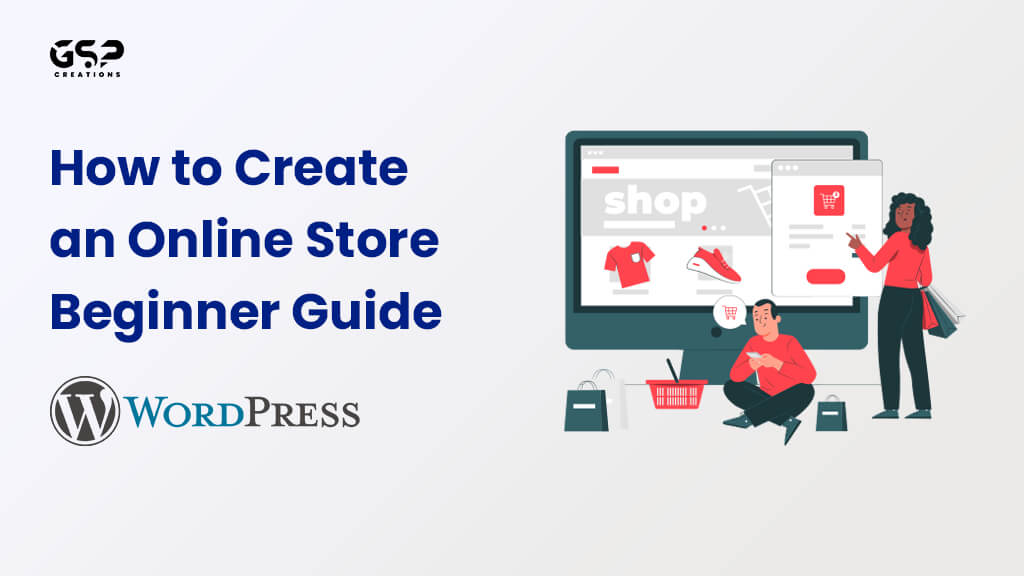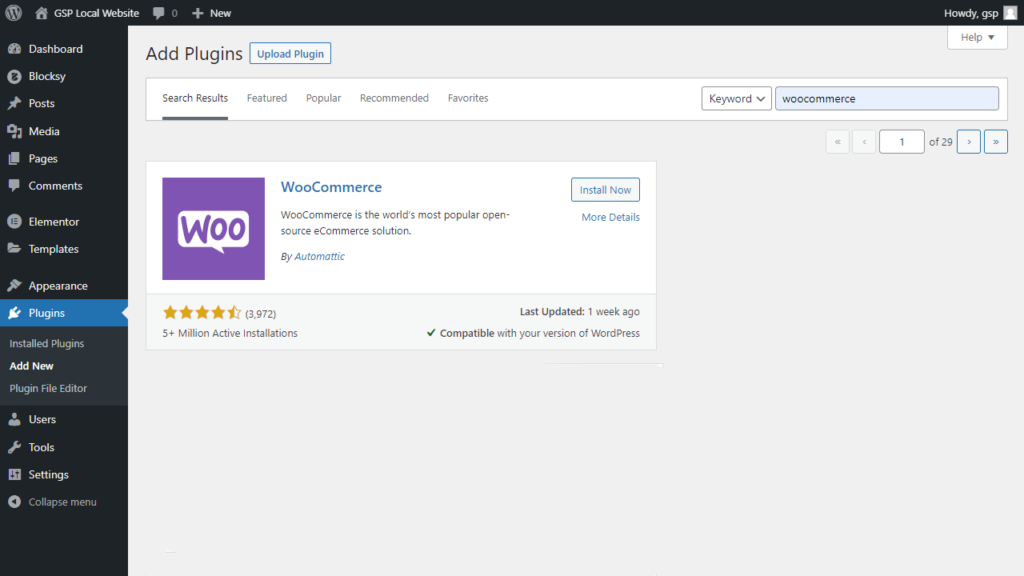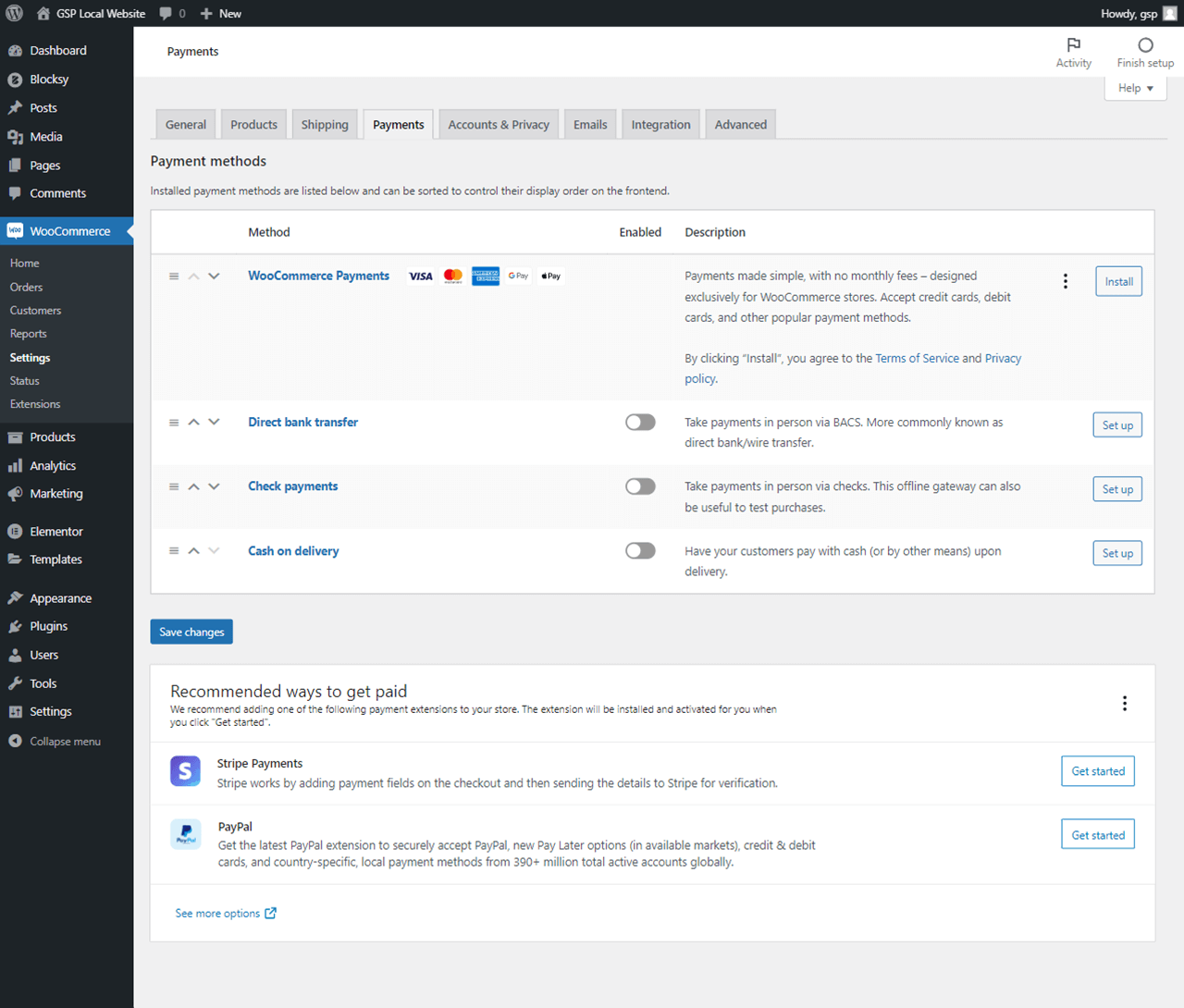Make Sure to Subscribe to Our Newsletter ✉️
Get the latest news and updates straight to your inbox.
Get the latest news and updates straight to your inbox.
Learn How to Create an Online store for your Business and start selling your Products using this free eCommerce Step by step Guide

Disclosure: Our content is reader-supported. This means we may receive a commission if you click some of our links. Learn More, why it's important and how you can support us.
Do you want to create an online store for free? We understand that the thought of creating an internet business might be frightening, especially if you are not a web developer.
You’re not alone. So we decided to make the most thorough guide on how to create an online store using WordPress (step by step)
You’ll need a few things to start an eCommerce site and start selling online.
Let’s look at it first, and then we’ll go to work on creating your online store.
The good news is you won’t have to worry about money because the eCommerce store will be built using WordPress and WooCommerce, which are both free to use.
The only money you’ll have to pay is on a name and web hosting, both of which are affordable.
You can create an eCommerce site in various ways, including coding from scratch, hiring a web developer, or using an eCommerce platform. For this guide, we’ll go with the latter because it’s the best option for new small business owners.
An eCommerce website builder provides simple tools for simplifying the website creation process. The number of features and resources available is determined by the pricing plan selected. The eCommerce platform handles the backend procedure for you, making it ideal for beginners. For example, Shopify, Wix or Zyro
A content management system (CMS) aids in the creation and management of digital content. The eCommerce software provides greater freedom and control over the development and management of your website. As a result, it has a steeper learning curve than a site builder.
In brief, a site builder serves small business owners that have little to no technical knowledge and do not want to deal with the technicalities of website creation and upkeep. Consider using a CMS if you value scalability and control over your own online store.
To create an eCommerce store, you’ll need a domain name, web hosting, and an SSL certificate.
A domain name is your website’s internet address. It is what consumers will put into their browsers to go to your website (for example, google.com or gspcreations.com).
Web hosting is where your eCommerce website is stored on the internet. It is your website’s internet address. Every website on the internet requires web hosting.
Hostinger, an approved WordPress and WooCommerce hosting provider, has agreed to provide our users with a free domain name, a free SSL certificate, and a web hosting discount.
Basically, you can get started for $2.99 per month.

There are many Themes and plugins Available on Wordpress.org. It isn’t very easy to determine which theme is best for your WordPress site, so we have a few suggestions, such as
WooCommerce is the market’s best online store builder. It is built on WordPress, giving you the flexibility of WordPress as well as the freedom to sell any product you want.
You must first install and activate the WooCommerce plugin. For more information, visit our step-by-step guide to installing a WordPress plugin.

Navigate to the Plugins » Add New page and look for WooCommerce. Click the Install Now button next to the WooCommerce listing in the search results.
WordPress will now get and install the WooCommerce plugin for you. Wait for it to finish downloading the plugin, then click the ‘Activate‘ option to proceed.
When you activate WooCommerce, it will run the setup wizard and display the Welcome to WooCommerce screen. This wizard will lead you through the most crucial WooCommerce settings.
First, you must enter basic information for your online stores, such as your address, country, and region. If you are a retailer, you can use your retail location information as the address.
To proceed, click the Continue button.
Following that, you’ll be prompted to select the things you’ll sell in your store. For example, you can select physical products if your products require shipping.
You can also select from a variety of product types. You can, for example, select both Physical Products and Downloads. Don’t be concerned about selling a variety of products. You can specify the type of product you want to add for each product.
The next step is setting up payment options So that your store can take online payments. There are many payment channels offered by WooCommerce that are simple to set up.
Select the “Payments” tab from the WooCommerce » Settings page. You can select from PayPal Standard, Cash on Delivery, Checks, or Bank Transfers by default.

If you scroll down below, you may also install WooCommerce Payments, PayPal Checkout, and Stripe. As payment alternatives, we advise selecting Stripe and PayPal Standard.
You can click the Setup button for each payment gateway to enter the necessary data. You could activate Stripe and enter your API Keys, for example (you can find this information under your Stripe account).
Let’s start by adding the first item to your online store.
To add a new product, navigate to Products » Add New.
Before giving a full description of your product, don’t forget to give it a title for the Product.
You will find the “Product Categories” box in the right column. Create a category for this product by clicking on the “+Add New Product Category” button. You can explore and sort through the products thanks to this.
If you slightly scroll down, You will see the Product Data box. This is where you will provide details about the product, such as the cost, availability, and delivery.
A box to add a short product description will appear below the product data box. These product descriptions will be displayed when consumers see multiple products on a page.
Finally, on the right side column, there are boxes for adding the main product image and a product gallery.
Once you’re happy with all the product information you’ve entered, click the Publish button to make it live on your website.
Repeat the process as needed to add more products.
After creating the online store, you must promote your products using various means to generate sales. Let’s look at how we may do this using various marketing tactics.
Search engine optimization
Search engine optimization (SEO) is the key to increasing your website’s visibility on search engine results pages (SERP). It can be achieved in a variety of ways. Such as developing high-quality content and constructing a flexible website. And also building a strong marketing strategy for your company.
It is critical that your website is updated with new features and content so that visitors feel welcomed and engaged. SEO, when done effectively, can assist increase your traffic and revenue.
If your eCommerce business is created using WordPress, you have many advantages. For example, you can utilize tools like Rankmath to help you optimize your website’s SEO.
Content Marketing
One of the most important things you can do to promote your online store is to provide quality content that interests customers.
This can be accomplished in a variety of ways. One of the most productive and cost-effective techniques in blog entries.
Blog articles are a fantastic tool to update current and future clients about your business and to offer new goods or services.
They can also be used as a marketing tool to create leads and sales.
Creating high-quality blog entries will be difficult. But it is crucial for any online company looking to expand its consumer base.
Social Media Marketing
Today, two-thirds of buyers make online purchases using social media. Because the majority of online customers use social media. Using social media platforms can help you grow your reach and produce more sales.
Social media marketing, like content marketing, is inexpensive. As a result, it is appropriate for small firms looking to increase consumer engagement and loyalty.
To improve your social media marketing efforts, consider the following suggestions:
Choose the appropriate social media channels.
It is better to focus your efforts on one or two platforms that have similar demographics to your target audience.
Use the commercial version.
In their corporate editions, social media networks like Facebook and Instagram contain essential data and marketing capabilities.
Email Marketing
Email marketing allows you to communicate with consumers via email. This marketing method provides a return on investment of $36 for every $1 invested, which explains why email marketing is preferred by 80% of marketers over social networking.
To begin, you must create an email list. Create a contact form where people may subscribe to your newsletter. Consider providing incentives such as single-use voucher codes to promote engagement.
The purpose of email marketing may be to generate online sales and promote your brand. But your emails do not have to be sales-related. For example, our newsletter offers links to our instructional blog entries.
You can give your subscribers updates about the store’s current promotions. Host a user-generated content competition, or provide product advice. Create a poll on your website to learn what your audience wants to see in newsletters.
To use this marketing plan on your store, make sure to install one of the WordPress newsletter plugins.
Paid Marketing
If you have extra cash to spend, paid promotion is the quickest approach to boost traffic. This online marketing strategy involves buying ad space through paid advertising platforms. And It circulates your ads across multiple websites and social media channels.
Today’s most popular paid marketing channels include Facebook, Instagram, TikTok, and Google Ads. To maximize investment returns, as with social media marketing. We recommend conducting preliminary research on each platform’s demographics.
Affiliate Marketing
Affiliate marketing allows you to sell products by using affiliate links. By working with affiliates, you can pay them a commission based on how many people use their affiliate links to buy something or click on a link.
You may get things going by setting up an affiliate marketing page on your website and contacting authors to form a collaboration.
Many people are shopping online to meet their needs. Now may be a perfect moment to launch an online store. Young business owners can now enter the market without learning how to code. Thanks to the availability of many eCommerce platforms and tools.
Setting up and running an online store with WordPress and Woocommerce is straightforward and will only take a few hours.
You may build a successful store that people will appreciate by following the easy steps I shared.
SEO and content marketing are essential for driving visitors to your e-commerce site to rank higher on search engines. This will increase the number of people who can find your store online.
Video Editing, Web Designing & Motion Graphics Intro, etc...
Join our subscriber’s list to get the latest news, updates directly in your inbox.